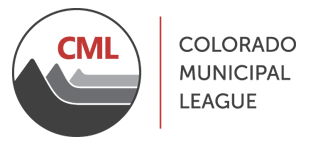CML Newsletter
In This Section
Current Articles
CML Newsletter
September 27, 2019
By Morgan Cullen, CML legislative and policy advocate
With chronic traffic congestion contributing to increased travel times and the daily anxiety of Colorado commuters, the Cities of Centennial, Lone Tree, and Greenwood Village have begun to fight back "intelligently."
As a result, commuters traveling through the south metro area may begin to see their daily grind behind the wheel reduced as some signals adapt to better fit changing traffic patterns.
Leveraging Centennial's intricate system of underground fiber-optic cable, completed last year, the city is assessing the feasibility of an Intelligent Transportation System (ITS) that will be made up of traffic vehicle sensors, signal controllers and a central management system that can track changing traffic patterns in real time and make modifications when needed.
Centennial, Lone Tree, and Greenwood Village are collaborating on a pilot project along South Yosemite Street from Lincoln to Belleview Avenues, known as Project Mercury, to gather data on prevailing traffic patterns to see where improvements can be made.
South Yosemite Street has become a popular alternative to commuters attempting to avoid traffic along the South I-25 corridor, which has inadvertently created additional congestion choke points through each municipality. To date, sensors have been installed and are currently collecting data. According to Lone Tree City Manager Seth Hoffman, the system should be deployed soon after the 2019 holiday season.
Eventually, the south metro region envisages a broad deployment of the ITS that incorporates a wide-ranging spectrum of existing and new technologies, including broad-spectrum TV cameras, traffic sensors, and adaptive signal controllers that will help tackle traffic congestion throughout the area.
While the initial $6 million investment to get the ITS master plan up and running is costly, it is still far cheaper than the prospect of adding additional lane miles.
It is exciting to see Colorado's municipalities harnessing the power of new technology to address chronic congestion issues. If these communities are successful, then smart technology may prove to be a practical solution that could be emulated across
the state.
As a result, commuters traveling through the south metro area may begin to see their daily grind behind the wheel reduced as some signals adapt to better fit changing traffic patterns.
Leveraging Centennial's intricate system of underground fiber-optic cable, completed last year, the city is assessing the feasibility of an Intelligent Transportation System (ITS) that will be made up of traffic vehicle sensors, signal controllers and a central management system that can track changing traffic patterns in real time and make modifications when needed.
Centennial, Lone Tree, and Greenwood Village are collaborating on a pilot project along South Yosemite Street from Lincoln to Belleview Avenues, known as Project Mercury, to gather data on prevailing traffic patterns to see where improvements can be made.
South Yosemite Street has become a popular alternative to commuters attempting to avoid traffic along the South I-25 corridor, which has inadvertently created additional congestion choke points through each municipality. To date, sensors have been installed and are currently collecting data. According to Lone Tree City Manager Seth Hoffman, the system should be deployed soon after the 2019 holiday season.
Eventually, the south metro region envisages a broad deployment of the ITS that incorporates a wide-ranging spectrum of existing and new technologies, including broad-spectrum TV cameras, traffic sensors, and adaptive signal controllers that will help tackle traffic congestion throughout the area.
While the initial $6 million investment to get the ITS master plan up and running is costly, it is still far cheaper than the prospect of adding additional lane miles.
It is exciting to see Colorado's municipalities harnessing the power of new technology to address chronic congestion issues. If these communities are successful, then smart technology may prove to be a practical solution that could be emulated across
the state.
Past Issues
pdf
pdf
pdf
pdf
pdf
pdf
pdf
pdf
pdf
pdf
pdf
pdf
pdf
pdf
pdf
pdf
pdf
pdf
pdf
pdf
